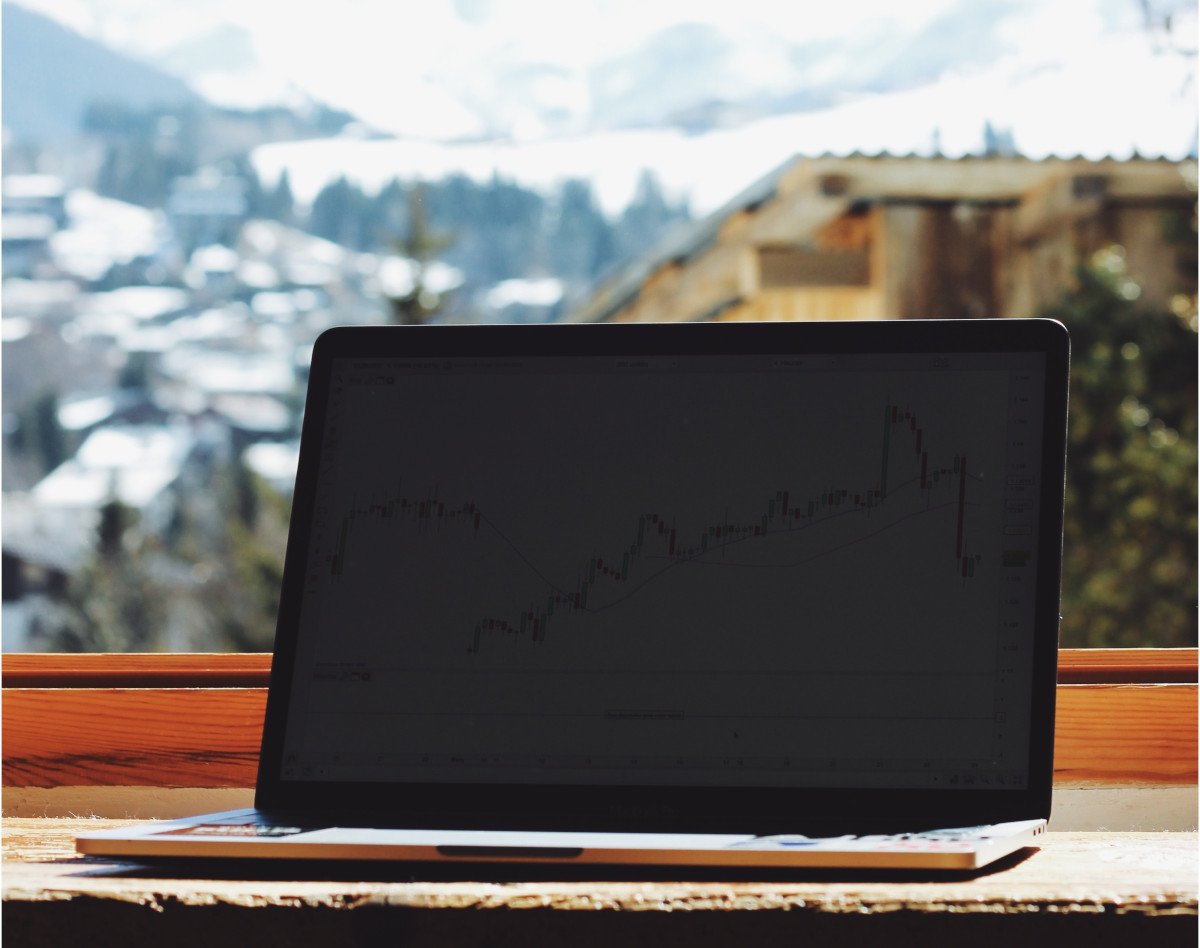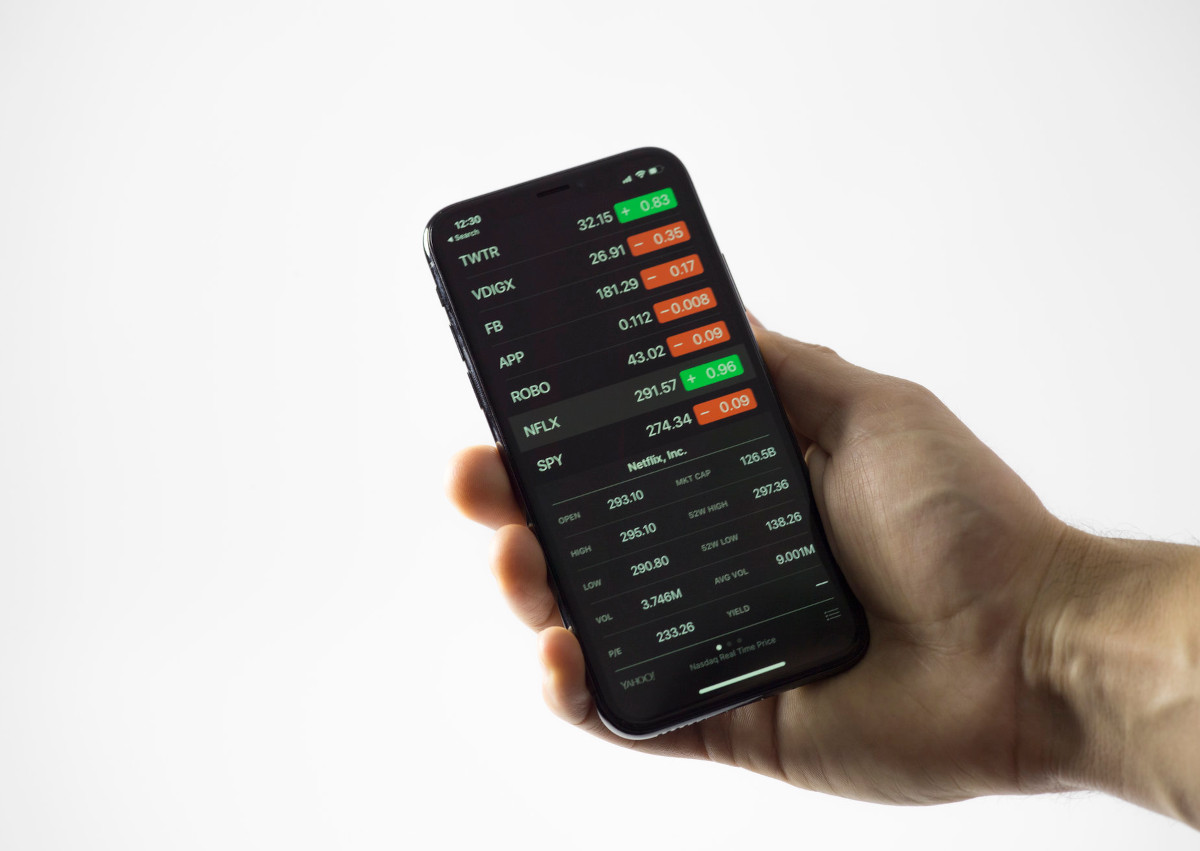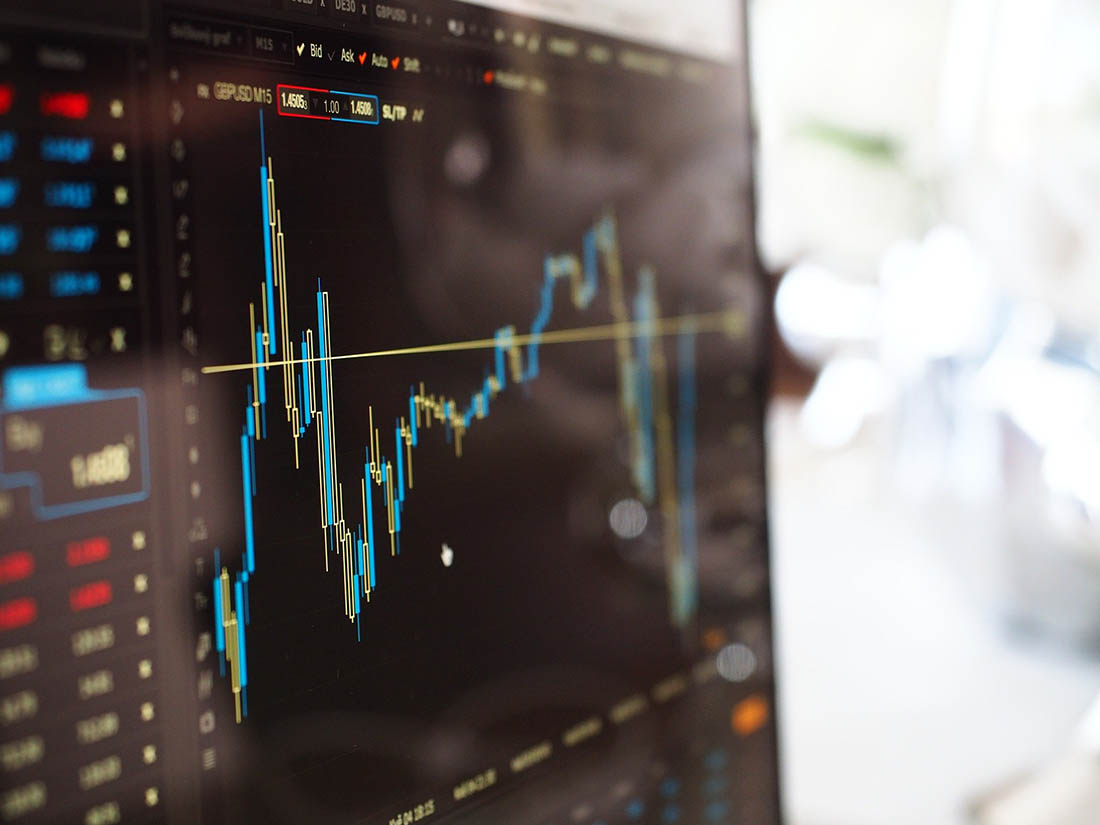(VIANEWS) – KKR & Co. (KKR), Great Lakes Dredge & Dock Corporation (GLDD), Rollins (ROL) are the highest sales growth and return on equity stocks on this list.
Here is a list of stocks with an above 5% expected next quarter sales growth, and a 3% or higher return on equity. May these stocks be a good medium-term investment option?
1. KKR & Co. (KKR)
26.8% sales growth and 9.42% return on equity
KKR & Co. Inc. is a private equity and real estate investment firm specializing in direct and fund of fund investments. It specializes in acquisitions, leveraged buyouts, management buyouts, credit special situations, growth equity, mature, mezzanine, distressed, turnaround, lower middle market and middle market investments. The firm considers investments in all industries with a focus on software, security, semiconductors, consumer electronics, internet of things (iot), internet, information services, information technology infrastructure, financial technology, network and cyber security architecture, engineering and operations, content, technology and hardware, energy and infrastructure, real estate, services industry with a focus on business services, intelligence, industry-leading franchises and companies in natural resource, containers and packaging, agriculture, airports, ports, forestry, electric utilities, textiles, apparel and luxury goods, household durables, digital media, insurance, brokerage houses, non-durable goods distribution, supermarket retailing, grocery stores, food, beverage, and tobacco, hospitals, entertainment venues and production companies, publishing, printing services, capital goods, financial services, specialized finance, pipelines, and renewable energy. In energy and infrastructure, it focuses on the upstream oil and gas and equipment, minerals and royalties and services verticals. In real estate, the firm seeks to invest in private and public real estate securities including property-level equity, debt and special situations transactions and businesses with significant real estate holdings, and oil and natural gas properties. The firm also invests in asset services sector that encompasses a broad array of B2B, B2C and B2G services verticals including asset-based, transport, logistics, leisure/hospitality, resource and utility support, infra-like, mission-critical, and environmental services. Within Americas, the firm prefers to invest in consumer products; chemicals, metals and mining; energy and natural resources; financial services; healthcare; industrials; media and communications; retail; and technology. Within Europe, the firm invests in consumer and retail; energy; financial services; health care; industrials and chemicals; media and digital; and telecom and technologies. Within Asia, it invests in consumer products; energy and resources; financial services; healthcare; industrials; logistics; media and telecom; retail; real estate; and technology. It also seeks to make impact investments focused on identifying and investing behind businesses with positive social or environmental impact. The firm seeks to invest in mid to high-end residential developments, but can invest in other projects throughout Mainland China through outright ownership, joint ventures, and merger. It invests globally with a focus on Australia, emerging and developed Asia, Middle East and Africa, Nordic, Southeast Asia, Asia Pacific, Ireland, Hong Kong, Japan, Taiwan, India, Vietnam, Malaysia, Singapore, Indonesia, France, Germany, Netherlands, United Kingdom, Caribbean, Mexico, South America, North America, Brazil, Latin America, Korea with a focus on South Korea, and United States of America. In the United States and Europe, the firm focuses on buyouts of large, publicly traded companies. It seeks to invest $30 million to $717 million in companies with enterprise values between $500 million to $2389 million. The firm prefers to invest in a range of debt and public equity investing and may co-invest. It seeks a board seat in its portfolio companies and a controlling ownership of a company or a strategic minority positions. The firm may acquire majority and minority equity interests, particularly when making private equity investments in Asia or sponsoring investments as part of a large investor consortium. The firm typically holds its investment for a period of five to seven years and more and exits through initial public offerings, secondary offerings, and sales to strategic buyers. KKR & Co. Inc. was founded in 1976 and is based in New York, New York with additional offices across North America, Europe, Australia, Sweden and Asia.
Earnings Per Share
As for profitability, KKR & Co. has a trailing twelve months EPS of $4.09.
PE Ratio
KKR & Co. has a trailing twelve months price to earnings ratio of 24.68. Meaning, the purchaser of the share is investing $24.68 for every dollar of annual earnings.
The company’s return on equity, which measures the profitability of a business relative to shareholder’s equity, for the twelve trailing months is 9.42%.
Dividend Yield
As stated by Morningstar, Inc., the next dividend payment is on Feb 15, 2024, the estimated forward annual dividend rate is 0.66 and the estimated forward annual dividend yield is 0.67%.
Moving Average
KKR & Co.’s value is way above its 50-day moving average of $89.54 and way above its 200-day moving average of $68.93.
2. Great Lakes Dredge & Dock Corporation (GLDD)
16.6% sales growth and 3.69% return on equity
Great Lakes Dredge & Dock Corporation provides dredging services in the United States. The company engages in capital dredging that consists of port expansion projects; coastal restoration and land reclamations; trench digging for pipelines, tunnels, and cables; and other dredging related to the construction of breakwaters, jetties, canals, and other marine structures. It is also involved in coastal protection projects that comprises of moving sand from the ocean floor to shoreline locations where erosion threatens shoreline assets; maintenance dredging, which consists of the re-dredging of previously deepened waterways and harbors to remove silt, sand, and other accumulated sediments; land reclamations, channel deepening, and port infrastructure development; and lake and river dredging, inland levee and construction dredging, environmental restoration and habitat improvement, and other marine construction projects. The company serves federal, state, and local governments; foreign governments; and domestic and foreign private concerns, such as utilities, oil, and other energy companies. It operates a fleet of 18 dredges, 17 material transportation barges, 1 drillboat, and various other support vessels. The company was formerly known as Lydon & Drews Partnership and changed its name to Great Lakes Dredge & Dock Corporation in 1905. Great Lakes Dredge & Dock Corporation was founded in 1890 and is headquartered in Houston, Texas.
Earnings Per Share
As for profitability, Great Lakes Dredge & Dock Corporation has a trailing twelve months EPS of $0.21.
PE Ratio
Great Lakes Dredge & Dock Corporation has a trailing twelve months price to earnings ratio of 40.33. Meaning, the purchaser of the share is investing $40.33 for every dollar of annual earnings.
The company’s return on equity, which measures the profitability of a business relative to shareholder’s equity, for the twelve trailing months is 3.69%.
Yearly Top and Bottom Value
Great Lakes Dredge & Dock Corporation’s stock is valued at $8.47 at 20:22 EST, way under its 52-week high of $9.78 and way higher than its 52-week low of $5.04.
Revenue Growth
Year-on-year quarterly revenue growth grew by 23.9%, now sitting on 589.63M for the twelve trailing months.
Sales Growth
Great Lakes Dredge & Dock Corporation’s sales growth is 17.5% for the present quarter and 16.6% for the next.
Moving Average
Great Lakes Dredge & Dock Corporation’s value is above its 50-day moving average of $8.27 and higher than its 200-day moving average of $7.90.
3. Rollins (ROL)
10.5% sales growth and 35.91% return on equity
Rollins, Inc., through its subsidiaries, provides pest and wildlife control services to residential and commercial customers in the United States and internationally. The company offers pest control services to residential properties protecting from common pests, including rodents, insects, and wildlife. It also provides workplace pest control solutions for customers across various end markets, such as healthcare, foodservice, and logistics. In addition, the company offers termite protection services and ancillary services. It serves clients directly, as well as through franchisee operations. The company was formerly known as Rollins Broadcasting, Inc and changed its name to Rollins, Inc. in 1965. Rollins, Inc. was founded in 1901 and is headquartered in Atlanta, Georgia.
Earnings Per Share
As for profitability, Rollins has a trailing twelve months EPS of $0.89.
PE Ratio
Rollins has a trailing twelve months price to earnings ratio of 50.98. Meaning, the purchaser of the share is investing $50.98 for every dollar of annual earnings.
The company’s return on equity, which measures the profitability of a business relative to shareholder’s equity, for the twelve trailing months is 35.91%.
Sales Growth
Rollins’s sales growth is 12.3% for the current quarter and 10.5% for the next.
Growth Estimates Quarters
The company’s growth estimates for the current quarter and the next is 11.1% and 17.4%, respectively.
4. Merchants Bancorp (MBIN)
10% sales growth and 17.67% return on equity
Merchants Bancorp operates as the diversified bank holding company in the United States. It operates through three segments: Multi-family Mortgage Banking, Mortgage Warehousing, and Banking. The Multi-family Mortgage Banking segment engages in the mortgage banking, which originates and services government sponsored mortgages, including bridge financing products to refinance, acquire, or reposition multi-family housing projects, and construction lending for multi-family and healthcare facilities. This segment also offers customized loan products for need-based skilled nursing facilities, such as independent living, assisted living, and memory care; and tax credit equity syndicator service. The Mortgage Warehousing segment funds agency eligible residential loans, as well as commercial loans to non-depository financial institutions. The Banking segment offers a range of financial products and services to consumers and businesses, which includes retail banking, commercial lending, agricultural lending, retail and correspondent residential mortgage banking, and small business administration lending. Merchants Bancorp was founded in 1990 and is headquartered in Carmel, Indiana.
Earnings Per Share
As for profitability, Merchants Bancorp has a trailing twelve months EPS of $5.64.
PE Ratio
Merchants Bancorp has a trailing twelve months price to earnings ratio of 7.66. Meaning, the purchaser of the share is investing $7.66 for every dollar of annual earnings.
The company’s return on equity, which measures the profitability of a business relative to shareholder’s equity, for the twelve trailing months is 17.67%.
Yearly Top and Bottom Value
Merchants Bancorp’s stock is valued at $43.18 at 20:22 EST, way below its 52-week high of $48.68 and way above its 52-week low of $21.50.
Growth Estimates Quarters
The company’s growth estimates for the current quarter and the next is 27.1% and 7.6%, respectively.
Dividend Yield
As stated by Morningstar, Inc., the next dividend payment is on Mar 14, 2024, the estimated forward annual dividend rate is 0.36 and the estimated forward annual dividend yield is 0.86%.
Revenue Growth
Year-on-year quarterly revenue growth grew by 35.8%, now sitting on 522.51M for the twelve trailing months.
5. Hub Group (HUBG)
9.2% sales growth and 10.36% return on equity
Hub Group, Inc., a supply chain solutions provider, offers transportation and logistics management services in North America. The company's transportation services include intermodal, truckload, less-than-truckload, flatbed, temperature-controlled, and dedicated and regional trucking, as well as final mile, railcar, small parcel, and international transportation. Its logistics services comprise full outsource logistics solution, transportation management, freight consolidation, warehousing and fulfillment, final mile delivery, and parcel and international services. The company also provides dry van, expedited, less-than-truckload, refrigerated, and flatbed truck brokerage services. It offers a fleet of approximately 2,300 tractors, 750 independent owner-operators, and 4,600 trailers to its customers, as well as the management and infrastructure. The company serves a range of industries, including retail, consumer products, and durable goods. As of December 31, 2022, it owned approximately 48,000 dry, 53-foot containers, as well as 750 refrigerated, 53-foot containers; and leased approximately 225 dry, 53-foot containers. The company was founded in 1971 and is headquartered in Oak Brook, Illinois.
Earnings Per Share
As for profitability, Hub Group has a trailing twelve months EPS of $2.62.
PE Ratio
Hub Group has a trailing twelve months price to earnings ratio of 15.89. Meaning, the purchaser of the share is investing $15.89 for every dollar of annual earnings.
The company’s return on equity, which measures the profitability of a business relative to shareholder’s equity, for the twelve trailing months is 10.36%.
6. Chemed Corp (CHE)
7.9% sales growth and 28.59% return on equity
Chemed Corporation provides hospice and palliative care services to patients through a network of physicians, registered nurses, home health aides, social workers, clergy, and volunteers in the United States. It operates in two segments, VITAS and Roto-Rooter. The company also offers plumbing, drain cleaning, water restoration, and other related services to residential and commercial customers through company-owned branches and independent contractors, and franchised locations. Chemed Corporation was incorporated in 1970 and is headquartered in Cincinnati, Ohio.
Earnings Per Share
As for profitability, Chemed Corp has a trailing twelve months EPS of $17.91.
PE Ratio
Chemed Corp has a trailing twelve months price to earnings ratio of 35.39. Meaning, the purchaser of the share is investing $35.39 for every dollar of annual earnings.
The company’s return on equity, which measures the profitability of a business relative to shareholder’s equity, for the twelve trailing months is 28.59%.
7. Verisk Analytics (VRSK)
6.8% sales growth and 73.54% return on equity
Verisk Analytics, Inc. provides data analytics and technology solutions to the insurance markets in the United States and internationally. It offers policy language, prospective loss costs, policy writing and rating rules, and various underwriting solutions for risk selection and segmentation, pricing, and workflow optimization; property- and auto- specific rating and underwriting information solutions that allows clients to understand, quantify, underwrite, mitigate, and avoid potential loss for risks; catastrophe modeling solutions, which enables companies to identify, quantify, and plan for the financial consequences of catastrophes for use by insurers, reinsurers, intermediaries, financial institutions, and governments. The company also provides life insurance solutions for transforming current workflows in life insurance underwriting, claim insights, policy administration, unclaimed property/equity, compliance and fraud detection, and actuarial and portfolio modeling; Marketing Solutions, such as compliant, real-time decisioning, profitability, and risk assessment for inbound consumer interactions; and international underwriting and claims solutions. In addition, it offers claims insurance solutions, which provides analytics in fraud detection, compliance reporting, subrogation liability assessment, litigation, and repair cost estimation and valuation solutions; and casualty solutions, such as compliance, casualty claims decision support, and workflow automation solutions. Further, the company supplies software to the specialty insurance market. The company was founded in 1971 and is headquartered in Jersey City, New Jersey.
Earnings Per Share
As for profitability, Verisk Analytics has a trailing twelve months EPS of $5.22.
PE Ratio
Verisk Analytics has a trailing twelve months price to earnings ratio of 43.61. Meaning, the purchaser of the share is investing $43.61 for every dollar of annual earnings.
The company’s return on equity, which measures the profitability of a business relative to shareholder’s equity, for the twelve trailing months is 73.54%.
Yearly Top and Bottom Value
Verisk Analytics’s stock is valued at $227.65 at 20:22 EST, under its 52-week high of $251.98 and way above its 52-week low of $177.89.
Earnings Before Interest, Taxes, Depreciation, and Amortization
Verisk Analytics’s EBITDA is 13.69.
8. DTE Energy Company (DTE)
5.9% sales growth and 13.02% return on equity
DTE Energy Company engages in the utility operations. The company's Electric segment generates, purchases, distributes, and sells electricity to various residential, commercial, and industrial customers in southeastern Michigan. It generates electricity through coal-fired plants, hydroelectric pumped storage, and nuclear plants, as well as wind and solar assets. This segment owns and operates distribution substations and line transformers. The company's Gas segment purchases, stores, transports, distributes, and sells natural gas to various residential, commercial, and industrial customers throughout Michigan; and sells storage and transportation capacity. Its DTE Vantage segment offers metallurgical and petroleum coke to steel and other industries; and power generation, steam production, chilled water production, and wastewater treatment services, as well as air supplies compressed air to industrial customers. Its Energy Trading segment engages in power, natural gas, and environmental marketing and trading; structured transactions; and the optimization of contracted natural gas pipeline transportation and storage positions. The company was founded in 1849 and is based in Detroit, Michigan.
Earnings Per Share
As for profitability, DTE Energy Company has a trailing twelve months EPS of $6.76.
PE Ratio
DTE Energy Company has a trailing twelve months price to earnings ratio of 16.14. Meaning, the purchaser of the share is investing $16.14 for every dollar of annual earnings.
The company’s return on equity, which measures the profitability of a business relative to shareholder’s equity, for the twelve trailing months is 13.02%.





